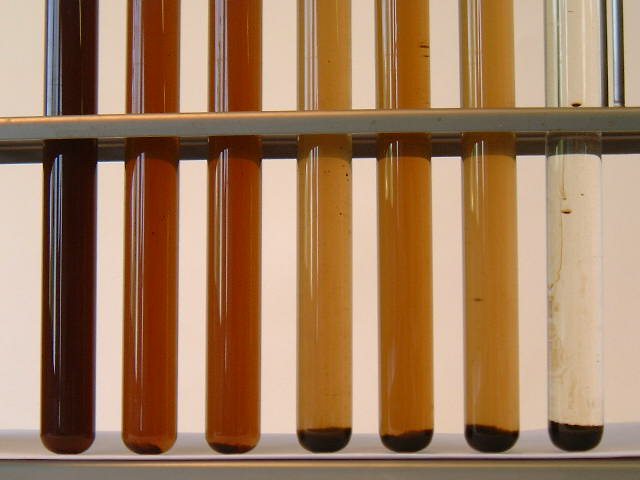
|
Eugene Dakin Ph.D., P.Chem Professional Chemist
|
|
|
|
|
Asphaltene Control Asphaltenes are tenacious ingredients in heavy crude oil which can plug or 'gum' up downhole or surface equipment. Typically, Asphaltenes exists with Paraffins to provide two times the problem. Asphaltenes are held in suspension by Resins which act similar to a suspension.
Control of asphaltenes is visualized by the following picture:
The untreated (far right - clear liquid with large black particles) has dissolved almost no asphaltene. To the opposite extreme, the far left test tube has completely prevented asphaltene from precipitating out of solution and is completely dispersed in solution.
A line treated with an asphaltene dispersant prevents asphaltene from precipitating out of solution. The Dispersant physically removes the paraffin from the equipment. With the asphaltene removed, more produced fluids are able to flow down the line.
Further research is being performed to chemically treat or chemically modify the metal matrix to lower the adhesion properties of production string metals. This is in the field of metallurgical chemistry.
Technically speaking: Organic molecules which have an aromatic and naphthalene ring containing sulphur, nitrogen and oxygen molecules are called asphaltenes. This portion of crude oil is in the hydrocarbon portion of crude oil and is not soluble in chemicals such as hexane.
Asphaltenes remain in solution within the hydrocarbons by resin molecules which stabilize asphaltenes. This stability is highly dependant on the ratio of resins to asphatlene molecules.
Asphaltenes can precipitate due to 1) a pressure drop, 2) acids, 3) Carbon Dioxide, 4) turbulent flow, 5) injected condensate, and 6) incompatible crude mixing.
Contact Eugene for more information.
|
|
| © 2006 - Eugene Dakin -
|

